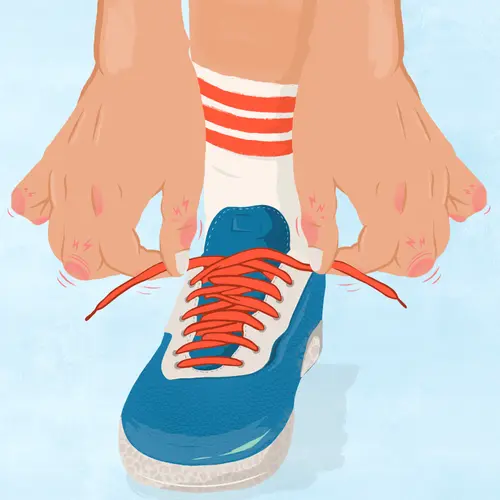Traveling with rheumatoid arthritis is a little more complicated, but it doesn't have to be less fun.
"There's no reason you can't travel just because you have RA," says Victoria Ruffing, RN, program manager at the Johns Hopkins Arthritis Center in Baltimore. "You just need to take some extra precautions before you go."
Planning Pain-Free Travel
First things first: Where are you going? Most of the world should be open to you, but there are a few things to think about.
- Make it relaxing. If you have RA, you need rest. If you don't get it, your symptoms could flare. So make sure to plan plenty of downtime. Now is probably not the time to plan a trip around the world. You can go just about anywhere you like, as long as you don’t overload your plans, says Jane McCabe, OTR/L, an occupational therapist and certified aging-in-place specialist in Laguna Hills, Calif.
- Set your own pace. If you're thinking about traveling with family or friends or on a tour, make sure that you won't be stuck on a strict or draining schedule, McCabe says. You need to have control over your day.
- Plan for your health. Will you have easy access to medical care if you need it? Identify hospitals and a pharmacy in the areas where you’ll be traveling.
Talk to Your Doctor
Before you go, ask your doctor:
- Does this trip seem like a good idea? If you're new to traveling with RA, see what your doctor thinks about your trip plans.
- What vaccinations do I need? You may not be able to receive certain travel vaccines if you’re on a biologic medication.
- Should I take any special medications? Your doctor might want you to have other drugs on the road in case you run into problems. For instance, steroids could help if you overdo it and have a painful flare, Ruffing says. Antibiotics could be handy if you get an infection.
- Can I get an extra copy of my prescriptions? Losing your medication could derail your trip.
Booking Your Room
When you travel with RA, your hotel room is more than just a place to crash. It's a refuge. So do some research to find a place that's comfortable and easy to manage. You may want:
- A room near the elevator or entrance, so you don't have to walk too far
- A bathroom with a tub or shower that's easy to get in and out of
- Easy access for a walker or wheelchair if you use one
- A refrigerator, in either your room or a secure area, if you need to keep medicine cool
Packing for Your Trip
To conserve energy and avoid pain:
- Choose the right luggage. "You need wheels on everything," says Lenore Frost, PhD, OTR/L, a clinical assistant professor of occupational therapy at Sacred Heart University in Fairfield, Conn. Suitcases that roll are easier on your joints and less tiring to move. For day trips while you're away, use a backpack or a bag with a shoulder strap to spread the weight. Handheld bags can put too much stress on your fingers and wrists.
- Keep your medications in your carry-on. You're less likely to lose them, and you'll know they’re safe. "RA medications can be fragile," Ruffing says. "If you pack them in your check-in luggage, temperature or pressure changes could potentially damage them." The Transportation Safety Administration says that once they’ve been screened, all types of medication are allowed through checkpoints.
- Pack for comfort. What’s most important? Shoes that offer good support.
While You're Away
To feel refreshed and save energy:
- Stretch and move during travel. Sitting too long will leave your joints aching and swollen. If you're driving, take breaks every hour to stretch your joints. If you travel by train or plane, take walks up and down the aisles to avoid getting stiff.
- Think about using an assistive device. Even if you don't normally need one, a cane or other device may help while you're away -- especially in long lines at museums or tourist spots.
- Take it easy. Overdoing it early could leave you fatigued and sore for days. So even if you're excited to get out and about, go slow. Better yet, don't make plans for your first day. Build time into every day to relax. Arrive extra early at the airport coming and going, so you can take a break after check-in and before boarding. Build in at least 1 day off after your trip, so you'll be refreshed and ready to go, not sore and dragging.

